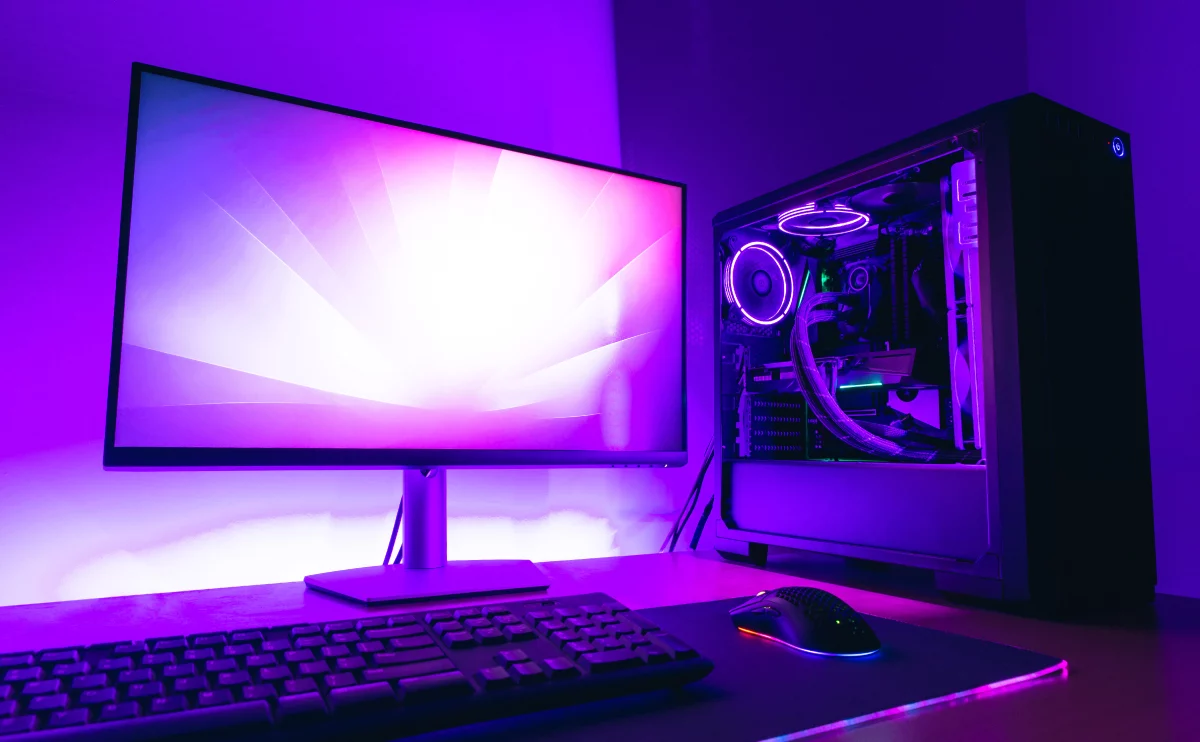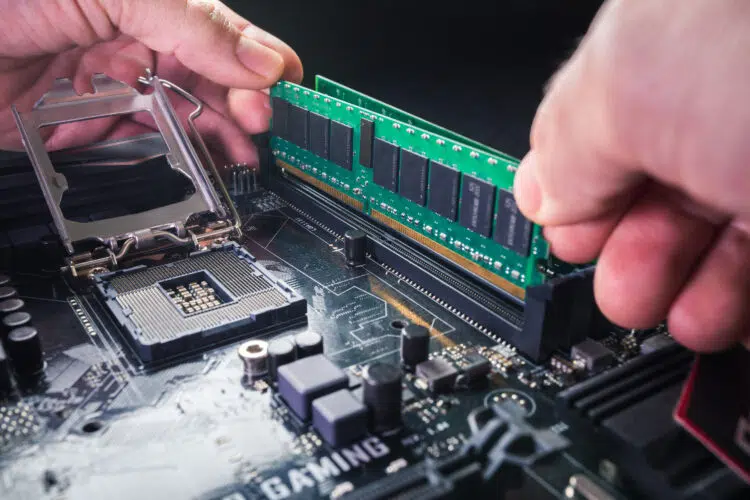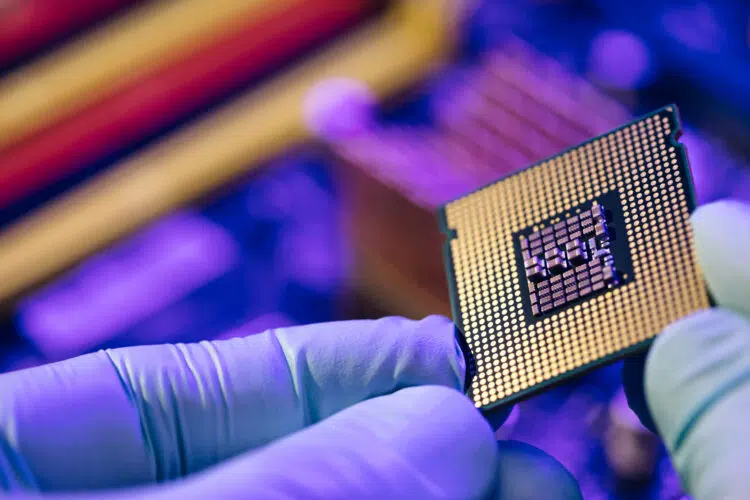Here’s everything about Rainmeter slowing down your computer:
Usually, Rainmeter is not going to slow down your computer by any amount that you are likely to notice.
The software has been around for more than a decade, and it is designed to work across a wide range of builds.
There are specific circumstances where you might want to turn it off, but most computers are fine.
So if you want to learn all about how and when Rainmeter slows down your Computer, then this article is for you.
Keep reading!
- M.2 NVMe SSDs: Two or More Affect Performance?
- Data Storage Full: Slows Down Computer?
- Sophos Slows Down Computer: True?
- Trend Micro Slows Down Computer: True?
- Computer Flops Calculating: How Many?
- Computer Idle Memory (RAM) Usage: How Much?

What Is Rainmeter?

Let’s start by understanding a little bit more about Rainmeter as a software package.
In essence, it’s a desktop customization tool.
That is, it allows you to customize the look and functionality of your desktop.
This is done through the use of “skins.”
Rainmeter skins can be purely cosmetic, changing how icons and built-in features look.
They can also be functional.
You can have weather skins that give you live weather reports, monitoring skins that let you see operating temperatures and many other skins that provide information and potentially change how you interact with your computer.
You may also have other essential information related to your computer’s components.
Rainmeter has been around for more than a decade, and it’s currently compatible with Windows 7 through 11.
Does Rainmeter Slow Down Your Computer? (2 Factors)

Aside from the user experience, Rainmeter impacts computer performance.
It uses raw computational resources in order to function.
If you use too many resources, then your computer will slow down.
That’s true for any software that you might want to install.
As for Rainmeter itself, whether or not it is likely to slow down your computer depends on the hardware you have, other software you are using, and how you use Rainmeter itself.
The easiest way to look at this is to break Rainmeter usage down by computer component and see how likely that is to impact overall performance.
#1 RAM

Let’s start with computer memory, also known as RAM.
Rainmeter was designed more than a decade ago.
Back then, computers typically had a lot less RAM than they do now, so the software was designed to work with relatively small memory resources.
How much RAM Rainmeter uses depends on the number and types of skins you use, but in the majority of cases, it will be under 15 MB of memory.
Let’s put that number in perspective.
A budget computer today will have 4 GB or more of memory.
If we remember that a Gigabyte (GB) is 1,000 Megabytes (MB), then you can see that even low-end computers have a lot more RAM than is being used by Rainmeter.
Even in extreme cases, Rainmeter rarely uses more than 45 MB of RAM.
That’s just not a lot by modern standards.
Your average web browser will use more than 1GB of RAM.
So, if your device can browse the internet, it can probably run Rainmeter without you noticing any ill effects.
#2 CPU

The other metric that is of particular concern is CPU usage.
In this case, we won’t be talking about raw units of measure.
Instead, CPU usage is typically measured in percentages.
Remembering that the CPU is the part of the computer that does the raw calculations for everything a computer can do it’s pretty important.
Once again, this does vary depending on the skins you choose, but CPU usage is pretty light when it comes to Rainmeter.
A poll of users found that the vast majority were able to utilize the software, and it consumed 5 percent of CPU availability or less.
Only 2 percent of users in the poll saw CPU usage for Rainmeter go above 30 percent.
Once again, this is quite tolerable for the vast majority of users.
In the next sections, we’ll get into the few cases where this amount of usage might be an issue.
This goes a little deeper.
If you follow the link on that poll, it was conducted in 2009.
The average CPU today is much more capable than those used in 2009.
A new poll would likely show even less resource usage, but such data is not clearly available.
When Would Rainmeter Slow Down a Computer? (2 Scenarios)

Considering that Rainmeter is designed to use few resources, is it ever really a problem?
In the vast majority of cases, you won’t notice any difference in performance whether you have Rainmeter active or not.
Specifically, there are two cases where you are more likely to notice its impacts.
That is when you have an old computer that is struggling to keep up with performing basic functions or when you are pushing your computer to the limits of its computational ability.
In these two scenarios, Rainmeter could make a difference in your experience, but even then, it might be ok.
#1 Old Builds

Rainmeter was released in the 2000s, and computers then were able to use it just fine.
If the age of your computer is related to why Rainmeter is slowing down your computer, we’re talking about a very old device.
But, some people are using such equipment, and that can be an issue.
CPUs are known to slow down a little with age, and when you combine that with the fact that older CPUs are less capable, then you might be in a situation where you need to carefully manage your CPU resources.
If your old build is struggling to run your version of Windows without any extra software, then every percentage point matters.
Turning off Rainmeter could in fact make a noticeable difference in general performance.
#2 Maximum Usage

This is less of an issue, but it’s still worth mentioning.
If you’re running activities that push your machine to the absolute limit, then getting back a few CPU percentage points could matter.
Such activities would include extremely intensive gaming and video editing.
They can be major CPU hogs, and if you hit 100 percent usage, then you’ll see things slow down.
If you happen to be at a point where the few percentage points going to Rainmeter get you back below 100 percent, then it’s worth disabling that software.
It’s more likely that you will turn off Rainmeter and still be at 100 percent usage.
This is because the most intense video processing applications (games and video editing) are capable of using more CPU power than your hardware can provide, so they’ll use as much as the system allows.
If you turn things off to get back a few percentage points, the video processing software will quickly consume that extra power.
How Much RAM Should Your Computer Use When Idle?

Ever wondered whether the RAM usage of your computer when idle is too high?
Background applications may negatively impact your user experience.
You use memory for every process on your computer, including your operating system.
When Windows is idle, it reserves between 1.8 and 2.4 GB of RAM.
The Mac OS uses as much memory as possible to keep it available for other programs and applications. Almost any number makes sense.
Learn all about how much RAM your computer should use when idle here.

